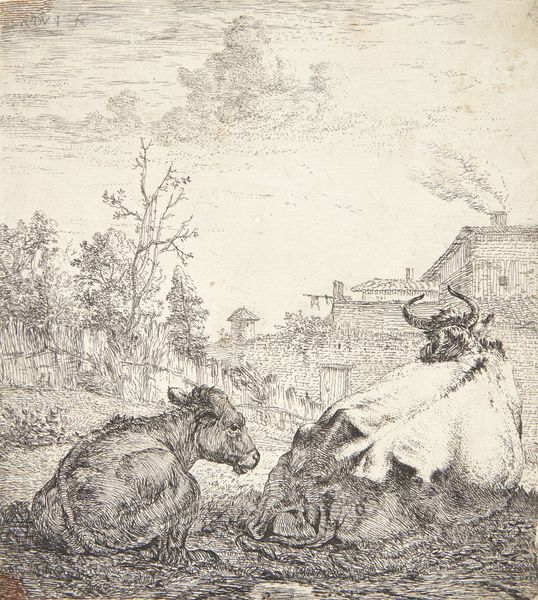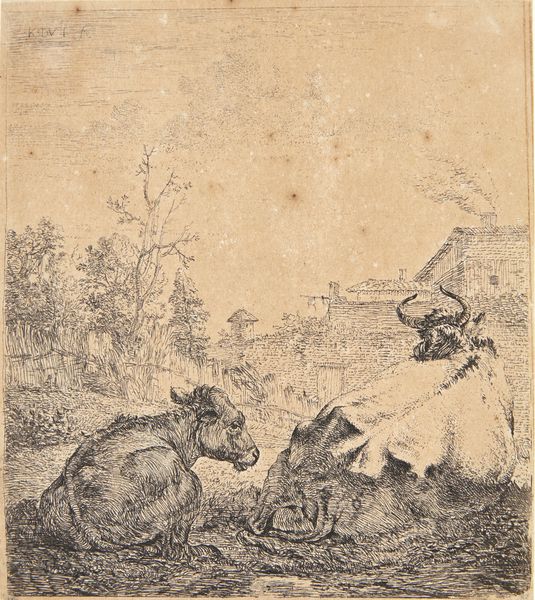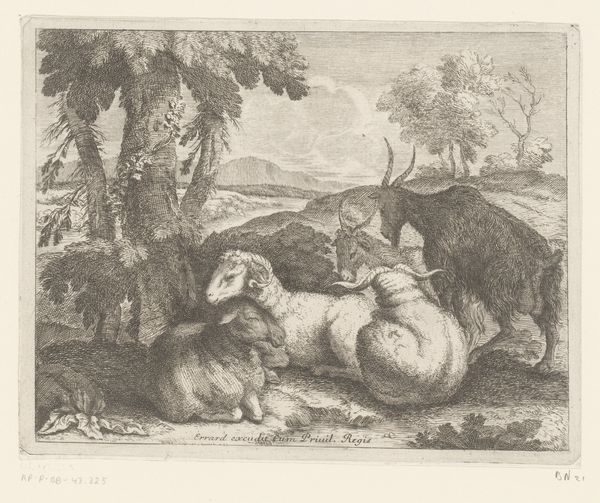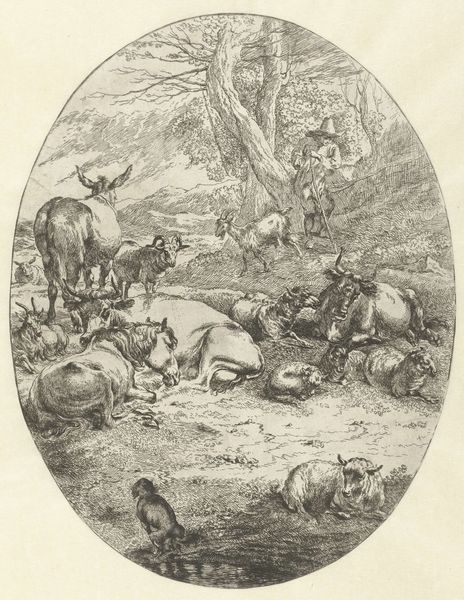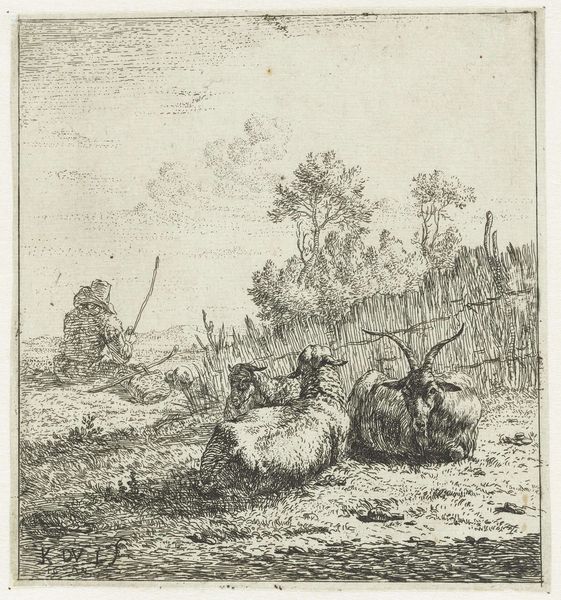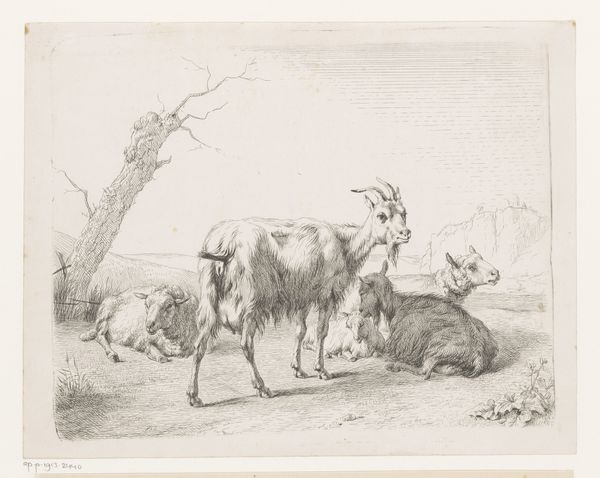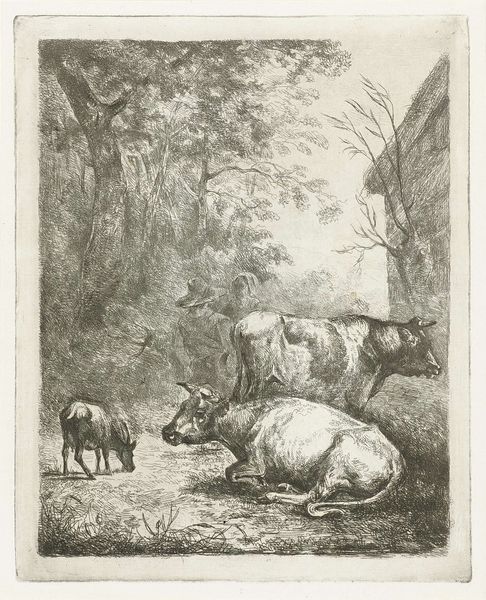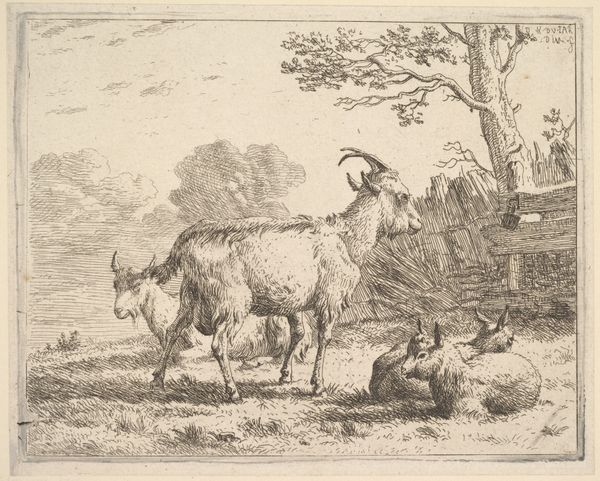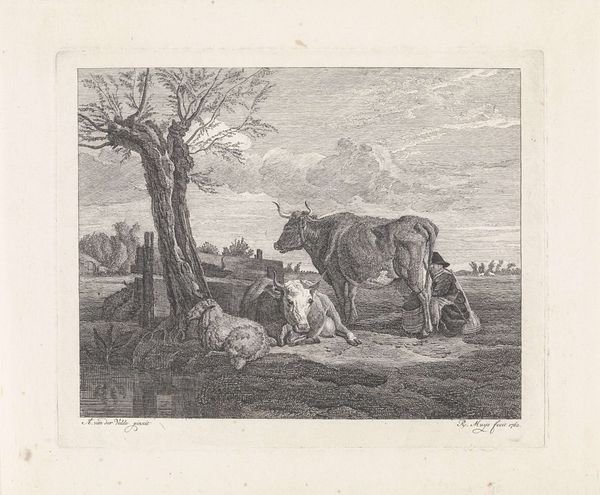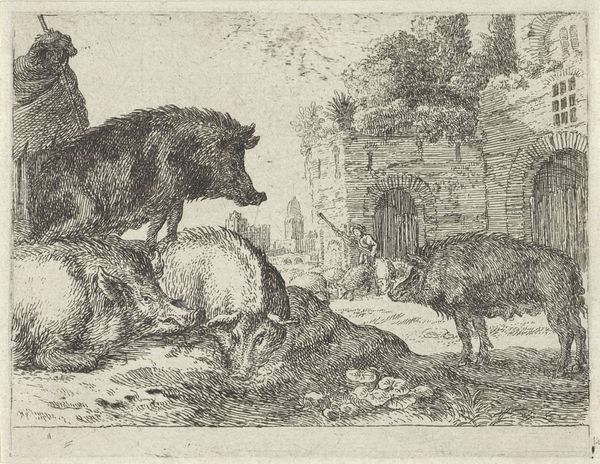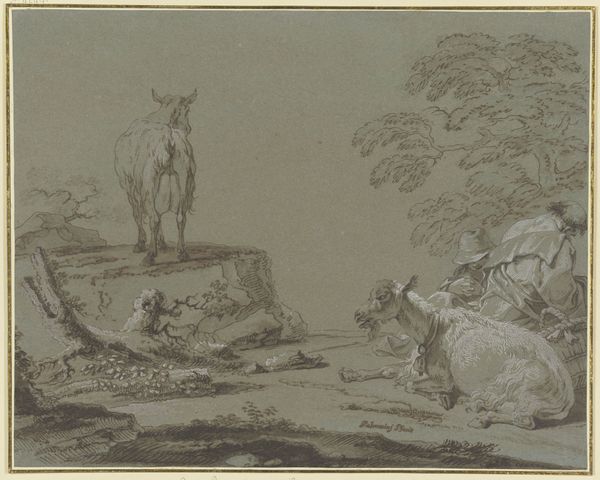
drawing, print, etching
#
drawing
#
dutch-golden-age
# print
#
etching
#
landscape
#
genre-painting
#
realism
Dimensions: Sheet (Trimmed): 6 1/8 × 5 1/2 in. (15.5 × 14 cm) Plate: 6 in. × 5 3/8 in. (15.2 × 13.7 cm)
Copyright: Public Domain
Karel Dujardin made this etching, “The Cow and the Calf,” sometime in the mid-17th century. An etching is an image made by drawing into a waxy ground on a metal plate, then exposing the plate to acid, which bites away the lines. Ink is then applied to the plate and paper pressed to it, resulting in a print. The etched line is notable here: wiry, uneven, and free. Look at the rich textures Dujardin coaxes from this process, from the furry hides of the animals to the wispy clouds above. The acid biting into the metal gives the print a tactile quality, a kind of three-dimensionality. Dujardin was one of many Dutch artists who specialized in Italianate landscapes with livestock, which were very popular with collectors. Note the way the rural scene is carefully composed, almost like a stage set. What seems like a simple pastoral image is in fact a carefully constructed artwork, mediated by skillful labor and a sophisticated printmaking process. In the end, the image reflects a complex relationship to the natural world.
Comments
No comments
Be the first to comment and join the conversation on the ultimate creative platform.
